NEWS Last week, the annual conference organised by Chemical Biological Centre (KBC) at Umeå University and SLU, gathered over 360 participants for two intensive days of knowledge exchange, networking, and celebrating the year’s achievements. This year’s theme, “Bridging Scales: from Quantum to Cosmos”, united discussions on how advances in physics, chemistry, life and Earth and planetary sciences can intersect to address fundamental questions about matter, life, and the universe.
Since 2009, the KBC DAYS conference has offered a platform for knowledge exchange among researchers from different departments and disciplines, while also highlighting research achievements, awards, and new faculty members within the KBC community.
“I wasn’t sure I would understand the different topics in the programme, but the speakers did a wonderful job communicating their science, and I found myself engaged in every talk throughout both days — it was all very interesting”, says Edoardo Piombo from Umeå Plant Science Centre. He was one of the attendees at the KBC DAYS 2025 who enjoyed the event’s strong multidisciplinary atmosphere.
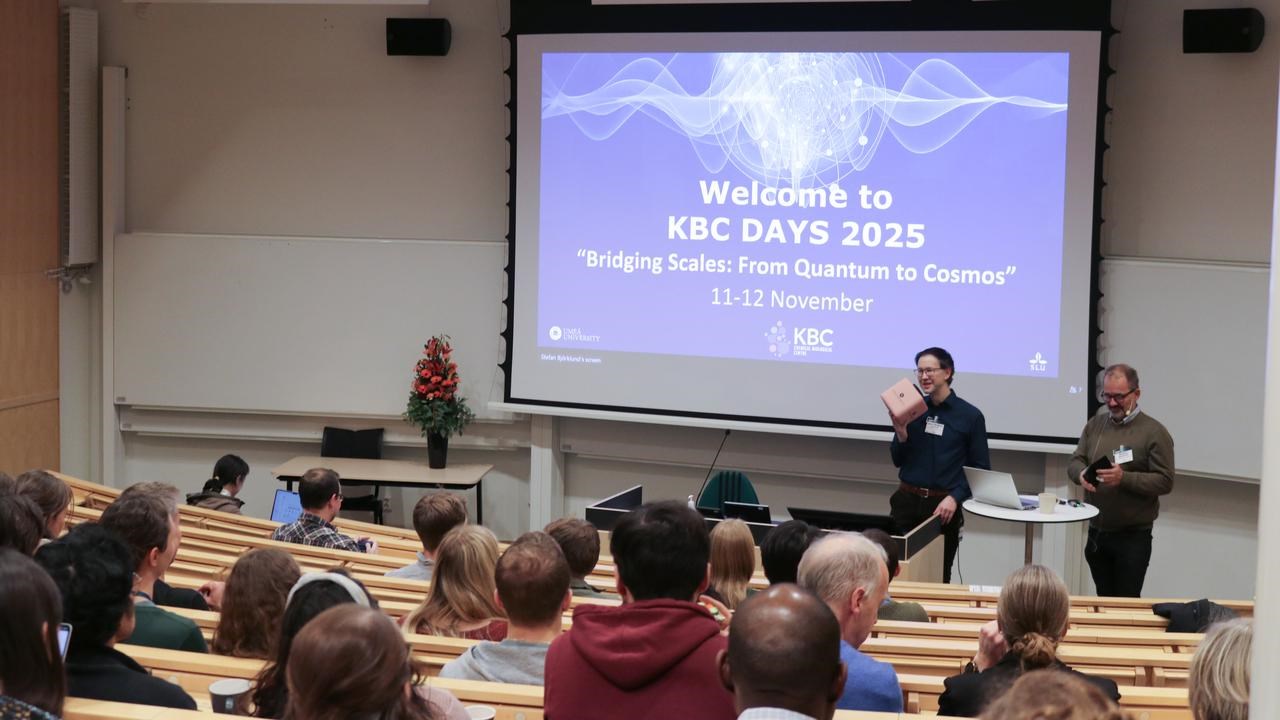
This year's main scientific theme was "Bridging Scales: from Quantum to Cosmos," serving as a central focus for discussions on different scales of scientific research and on analysing and applying research findings across various scales and dimensions. The choice of this theme was also influenced by the International Year of Quantum Science and Technology (IYQ 2025). In this photo, Lars-Anders Carlson and Stefan Björklund, both members of the scientific organising committee, are opening the conference in the Carl Kempe lecture hall at KBC.
ImageAnna ShevtsovaWithin the theme “Bridging Scales: from Quantum to Cosmos”, the invited keynote speakers showcased cutting-edge research spanning across the scales from quantum biology to remote sensing and machine learning in landscape analysis, and to comparative planetology.
At the far end of the spectrum, Clarice D. Aiello, a leading expert in quantum biology, reviewed experimental evidence for quantum phenomena in biological systems, discussed proposed biophysical mechanisms, and highlighted their potential implications for technology, therapeutics, and our understanding of life across scales.
Reflecting on her talk, Assistant Professor Nicolò Maccaferri, a member of the scientific organising committee, commented:
“Clarice’s research at the intersection of physics and biology aims to confirm or refute the ‘Quantum Biology Hypothesis’, which suggests quantum states last long enough inside cells to be biologically relevant. If proven true, this way of approaching biology and biological problems could revolutionise our way of seeing and understanding life as we know it.”
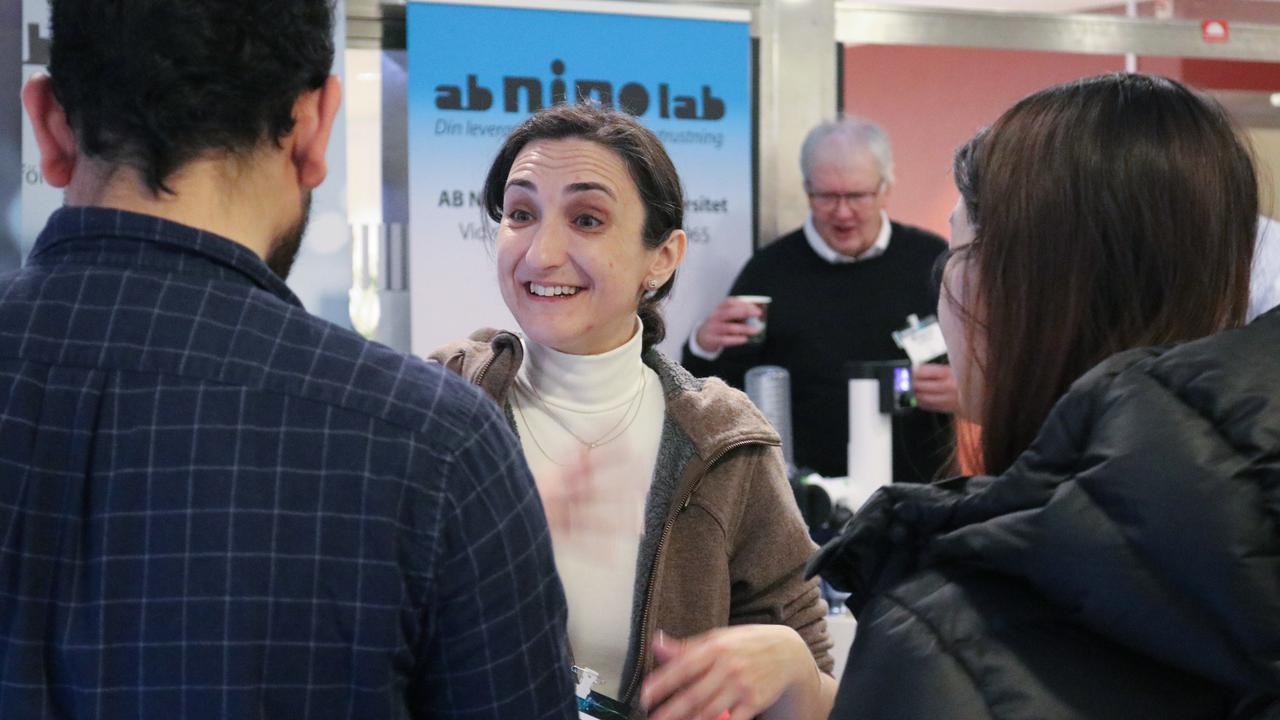
Clarice D. Aiello, founder of the Quantum Biology Ecosystem and CSO of the Quantum Biology Institute, USA, is conversing with conference participants after her inspiring keynote lecture “Quantum Biology: How nature might be optimized to harness quantum mechanics”.
ImageAnna ShevtsovaAt the other extreme of the presented scale, Stephanie Werner from the Centre for Planetary Habitability at the University of Oslo explored current methods for detecting exoplanets, their surprising diversity, and the challenges of defining and identifying Earth-like habitability across evolving planetary systems.
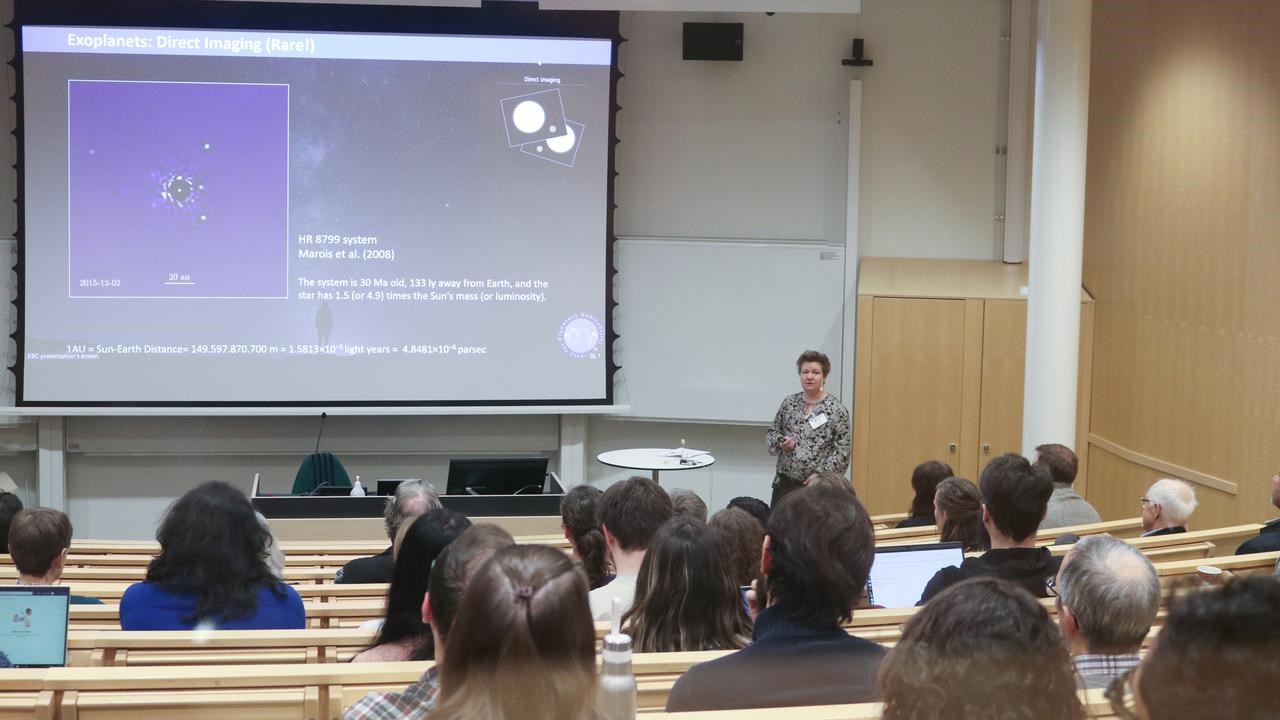
Professor Stephanie Werner, from the Department of Geosciences at the Centre for Planetary Habitability, University of Oslo, is delivering her keynote lecture titled "Exoplanets, near and far, small and rare, large and plenty?".
ImageAnna ShevtsovaThe KBC DAYS traditionally give PhD students a chance to present their projects through a short “elevator talk” and/or a poster to a broad, multidisciplinary scientific community, sharpening their science communication skills. The best talk, selected by the evaluation committee, was awarded a travel voucher sponsored by the Umeå-based company Agrisera, while the best poster, as voted by the participants, received the prize from SciLifeLab Umeå.
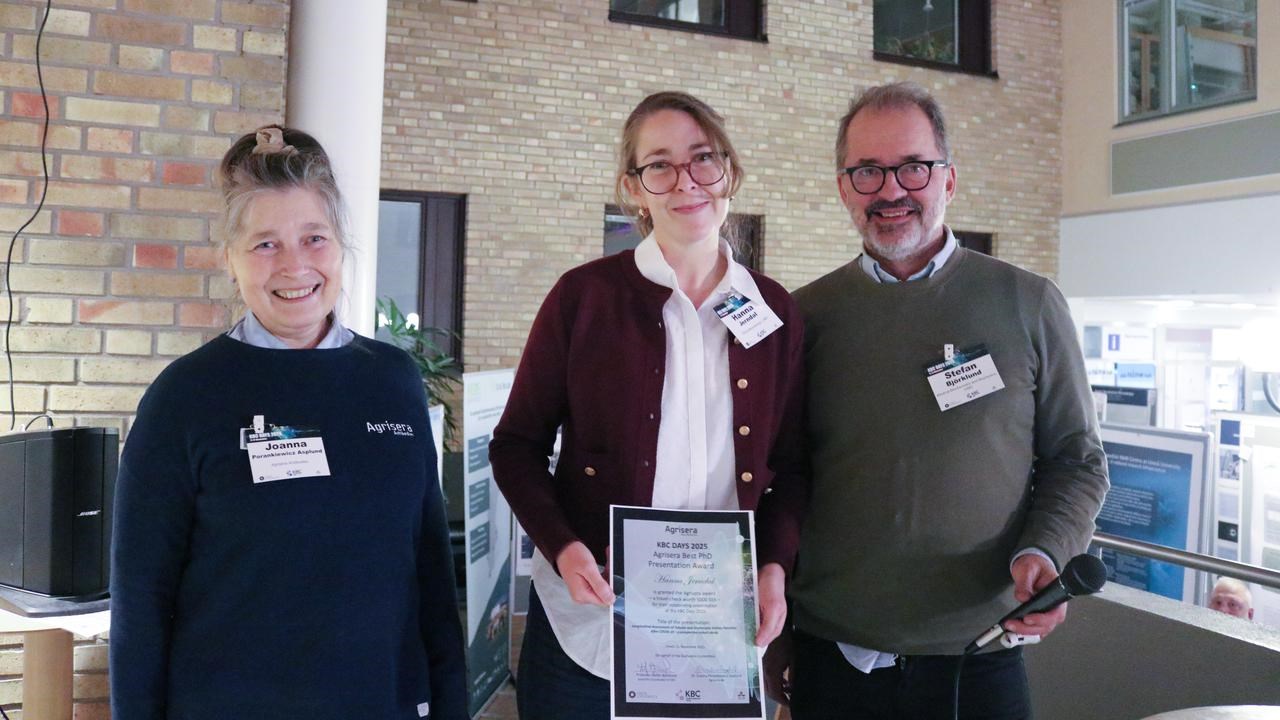
Hanna Jerndal, from the Department of Clinical Microbiology, receives the Agrisera award for her outstanding “Elevator talk” presentation at KBC DAYS 2025, titled “Longitudinal Assessment of Tubular and Glomerular Kidney Function After COVID-19 – a prospective cohort study”. In the photo, Hanna is with Joanna Porankiewicz-Asplund from Agrisera and Stefan Björklund, scientific coordinator of KBC.
ImageAnna Shevtsova
Mingyu Liu from the Department of Plant Physiology, Umeå Plant Science Centre (UPSC) receives the prize for the best poster titled “Light-dependent modulation of sustained quenching during overwintering in Pinus koraiensis seedlings”.
ImageAnna ShevtsovaOn the second day of the conference, a panel discussion organised by the Umeå Postdoc Society drew significant interest from doctoral students and postdocs. The session focused on navigating the career journey from postdoctoral researcher to principal investigator (PI). The panel, composed of six young PIs, discussed key aspects of transitioning from postdoc to PI, including strategies for obtaining early-career funding, crafting competitive grant proposals, leveraging mentorship and institutional support, balancing research with grant writing, and maintaining resilience in the face of setbacks.

Panel discussion “From Postdoc to PI: Winning Grants and Finding Your Path” organised by Umeå Postdoc Society (UPS) and moderated by Madhusree Mitra and Keshi Chung. The panel consisted of (left to right) Max Renner (Department of Chemistry and UCMR), Ryo Morimoto (Department of Molecular Biology and MIMS), Verena Kohler (Department of Molecular Biology), Laura Bacete (Department of Plant Physiology, UPSC), Paulina Wanrooji (Department of Medical Biochemistry and Biophysics), and Eric Capo (Department of Ecology, Environment and Geoscience).
ImageAnna Shevtsova“I found the panel discussion very valuable, especially as a PhD student who hasn’t yet secured a postdoctoral position but is already thinking about a future career as a principal investigator. Hearing from established PIs about the challenges they faced on their journey to becoming leaders in their fields was eye-opening”, says Dmytro Sokol, doctoral student from the Department of Chemistry.
Among many personal experiences shared and practical advice offered, the panel emphasised a message that resonated with many: don't get stuck after a grant proposal rejection, ask your peers for feedback, and keep trying! The panellists also discussed that it can be a steep learning curve for those unfamiliar with the local research culture, creating hidden barriers to funding access. They agreed that one of the important steps in transitioning to an early career is learning how your local research funding and research support systems operate.
“Overall, the discussion was inspiring and helped clarify my thoughts on whether I want to pursue the path to becoming a PI. It provided practical tips, a clearer understanding of what lies ahead, and strengthened my determination to face the challenges of my future academic career”, says Dmytro Sokol.
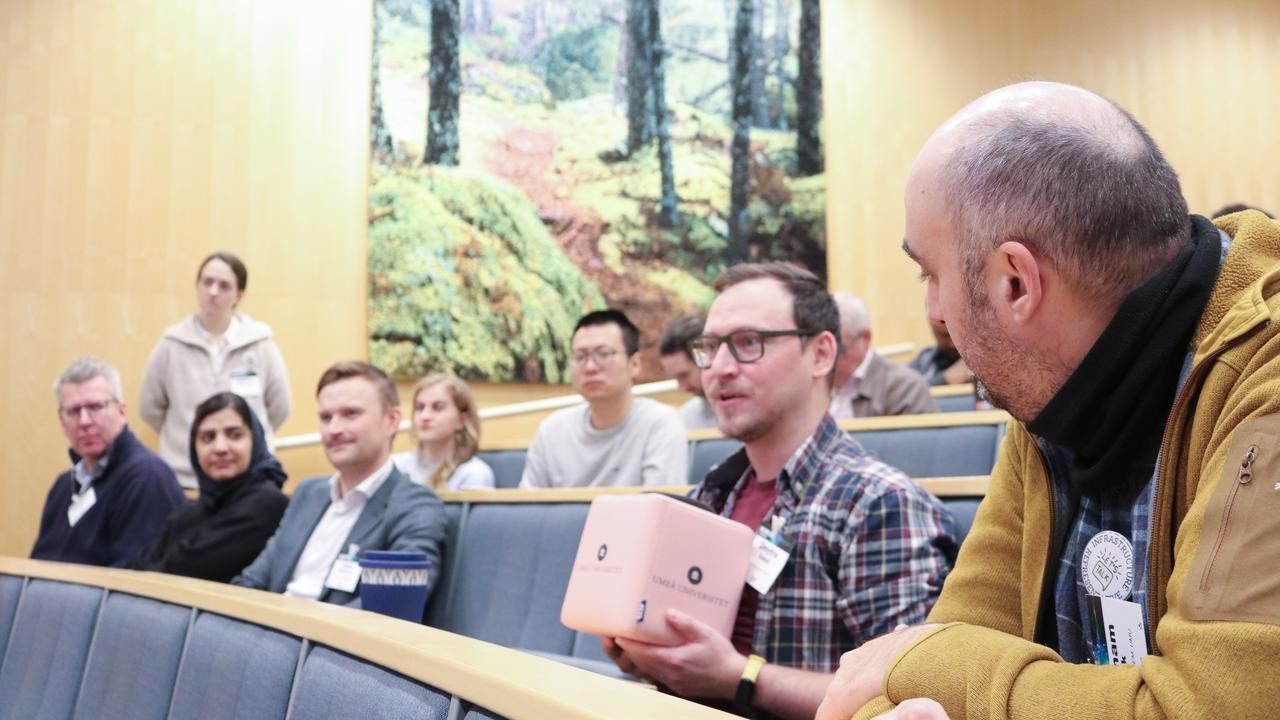
Dmytro Sokol, a PhD student in biochemistry, is addressing the panel during the discussion “From Postdoc to PI: Winning Grants and Finding Your Path”.
ImageAnna ShevtsovaThe KBC DAYS also serves as a forum where research infrastructures at KBC and Campus Umeå can showcase their advanced technologies, unique instruments, expert know-how, and services. These infrastructures can be used to explore different aspects of life- and material sciences, ranging from the atomic scale to entire ecosystems. For instance, mass spectrometry analyses performed by the Swedish Metabolomics Centre Umeå (SMC) detect metabolites across a range from millimolar to femtomolar levels — over nine orders of magnitude. Meanwhile, the technical platforms at Umeå Marine Sciences Centre (UMF) accommodate experiments from millilitres to litres of water in laboratory incubations, extending to multi-cubic-metre mesocosms, as well as field sampling throughout the Bothnian Sea. The temporal scale of experiments at UMF ranges from rapid molecular analyses within hours to seasonal and multi-year monitoring programmes that track environmental trends.
The impressive array of local and national research infrastructures available at KBC, SciLifeLab and “on the other side of the road”, at the Translational Research Centre at the University Hospital of Umeå, was overviewed by Linda Sandblad, Umeå Centre for Electron Microscopy and SciLifeLab Umeå, and Ola Billing, from the Department of Diagnostics and Intervention.
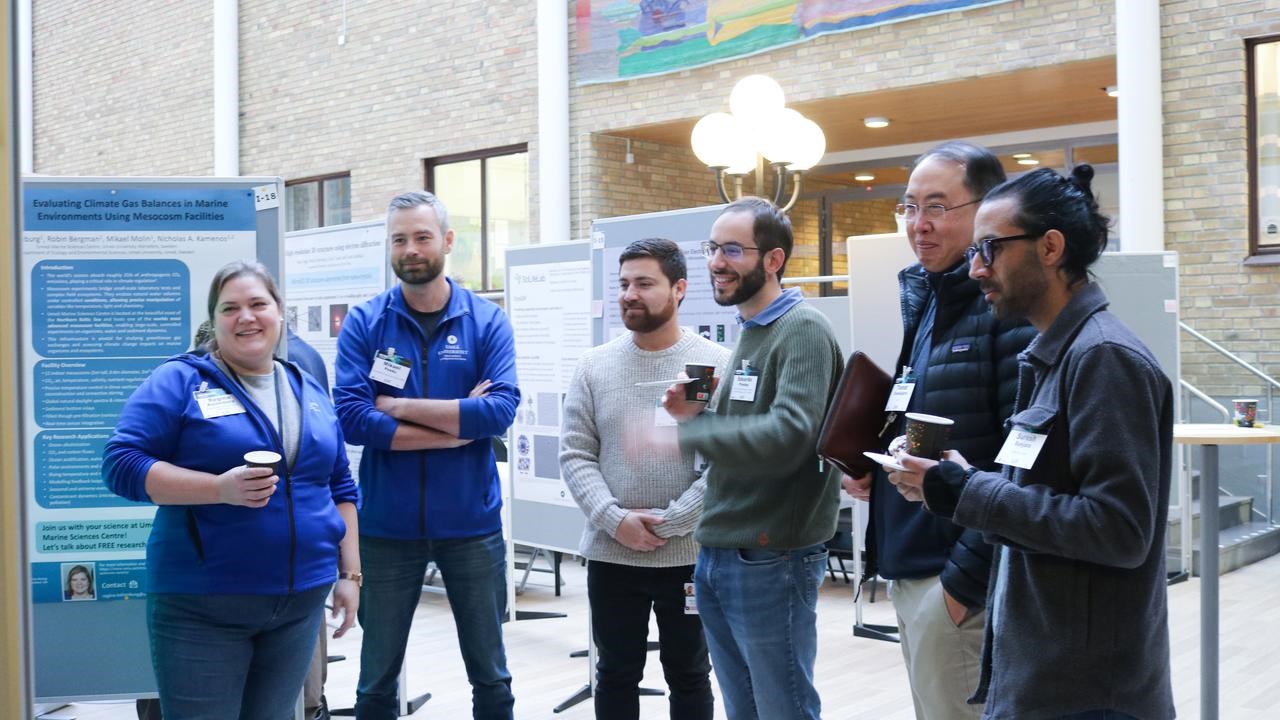
Newcomers, as well as long-term KBC residents and other curious researchers, could meet infrastructure representatives at their posters to discuss potential projects, join guided tours of their facilities, or solve the infrastructure quiz. In the photo, Regina Kolzenburg and Mikael Peedu (in blue jumpers) talk to conference participants at their “station”, presenting the research facilities at the Umeå Marine Sciences Centre (UMF).
ImageAnna ShevtsovaOne of the most memorable and exciting moments of the conference was the live experiment – creating the World’s Smallest Solar System Model. During the Infrastructure session, participants could follow a live stream from the Umeå Centre for Electron Microscopy (UCEM) lab, where staff scientist Nils Hauff created one of the model’s elements, Saturn, inside FEI Scios, a Focused Ion Beam Scanning Electron Microscope. With a scale of 1 : 7 000 000 000 000, this model is so tiny that you would need a stereo microscope to find Saturn, which measures around 15 μm or a pollen grain, and an electron microscope to see its moon Titan, which is about 700 nm in size. The entire solar system, including the Sun, planets, the most important moons, and dwarf planets such as Pluto, has been scaled down so much that 38 AU can fit onto a 75 cm-long metal rod.
Nils Hauff explained that the aim of this experiment was to demonstrate the instrument's capability to fabricate structures at the nanometer scale.
“We also wanted to illustrate how extremely different length scales are involved in the research here at KBC and how challenging it is to comprehend those different length scales”, he says.
This academic stunt was inspired by the Sweden Solar System, the world's largest permanent scale model of the solar system, located throughout Sweden at a scale of 1:20 000 000, where the Sun is represented by Avicii Arena in Stockholm, and Umeå holds the 13 cm-diameter model of dwarf planet Eris.
“Now Sweden is home not only for the largest, but also for the smallest model of the solar system in the world!”, says Nils Hauff.
He already holds one record – earlier this year, he made the world’s smallest Dala horse in collaboration with Erik Olof Wiklund, an artist and master’s student at the Academy of Fine Arts. During the KBC DAYS, their photo ”The world's smallest Dalahorse” won the KBC photo contest “Bridging scales” in a tough competition among nearly 30 other impressive artistic contributions.
Throughout October, the KBC Ping-Pong tournament took place, attended by over 50 participants ranging from complete beginners to advanced players. Thanks to the energy and organisational skills of Irina Iakovleva, research coordinator at Bio4Energy, and several volunteers, the tournament became a much-appreciated event, providing a fantastic opportunity to enjoy sports and camaraderie with colleagues across KBC and beyond.
The tournament culminated with tense semi-finals and the final matches just before the conference dinner, adding excitement and an informal touch to the scientific gathering.

Sonali Ranade from the Department of Forest Genetics and Plant Physiology, UPSC, SLU, receives the KBC Employee of the Year 2025 award for her “enthusiasm” and “for bringing joy and laughter to the KBC workplace”.
Image Anna ShevtsovaDuring the conference dinner, the KBC Employee of the Year was announced. The winner was chosen by the KBC group members from several nominees who “made a meaningful contribution to improving the work environment at KBC, especially by strengthening collaboration and community spirit”. This year’s award recipient was Sonali Ranade from UPSC. Sonali was nominated for her initiative in launching a laughter club, where colleagues gather to practise laughing yoga and breathing exercises, Pranayama, that help improve well-being and reduce stress. Dinner participants could try a brief introduction to the laughter session. The laughter club will resume regular sessions in spring 2026, and everyone interested is welcome to join.
“Just come with the smile!” says Sonali Ranade, smiling.
The success of KBC DAYS 2025 was made possible through the collective efforts of a vibrant research community and the generous support of sponsors.
What new challenges will 2026 bring, and which scientific themes should we explore together within the interdisciplinary KBC research community? Get ready for the KBC DAYS 2026 and share your ideas for themes and other suggestions with the KBC Communications Office.
More information:
KBC Days 2025 programme and abstracts
Homepage of Umeå Postdoc Society
UMU news: Art meets nanotechnology – the world’s smallest Dala horse created at Umeå University
UPSC news: Sonali Ranade awarded KBC Employee of the Year 2025

Stefan Björklund, Scientific Coordinator of KBC, opens the KBC DAYS and presents last year’s events and achievements.

Ingrid Söderbergh, research coordinator at UCMR and one of the conference organisers, greets participants at the registration desk.
Image Ainhoa Querejeta
Lars-Anders Carlson, Associate Professor at the Department of Medical Biochemistry and Biophysics, is one of the local speakers who was invited to present at KBC Days 2025 in recognition of his Erik K. Fernström Prize 2024 and recent major research grants.

Engaging conversations over coffee at KBC DAYS 2025

Pól Martin Bendix (Niels Bohr Institute, University of Copenhagen) in conversation with Magnus Andersson (Umeå University).

Participants networking during a break at KBC Days 2025

Researchers connecting and exchanging ideas during the conference break.

Interdisciplinary mingling at KBC Days 2025

During the poster session, research infrastructure representatives showcased services, methods, and instruments—offering participants opportunities for drop-in project discussions, facility tours, and even an online infrastructure quiz.

Research infrastructure representatives networking during the poster session at KBC Days 2025

Infrastructure managers and representatives are prepared to showcase their facilities and services to conference attendees.

Linda Sandblad, director of the Umeå Centre for Electron Microscopy and SciLifeLab Umeå, demonstrates the various elements of the world’s smallest solar system model created using a Focused Ion Beam Scanning Electron Microscope, FIB-SEM, in a live experiment during the Infrastructure session.

During the poster session, participants could view a model of Saturn through a stereo microscope. The elements of the world’s smallest solar system model, representing the Sun and planets, are scaled to fit within 75 cm on a metal rod. The round object on the table is a model of dwarf planet Eris, an element of the Sweden Solar System, which was loaned from its location at Curiosum, Umeå Art Campus.

Overview of local and national research infrastructures at KBC and Campus Umeå presented during the Infrastructure session

Cosy candle-lit conference dinner in the KBC Ljusgården

The winners of the KBC Ping-Pong Tournament 2025 (from left to right): Mitul Srivastava (Kempe/KBC postdoc from the Department of Chemistry) – 2nd place; Michael Holmboe (Associate professor, Department of Chemistry) – 1st place; Moritz Herrmann (master student at the Department of Ecology, Environment and Geoscience) and Vimal Parkash (Staff scientist at the Department of Medical Biochemistry and Biophysics) – shared 3rd and 4th places.